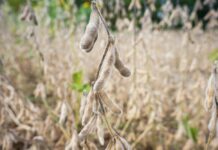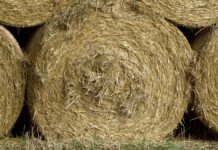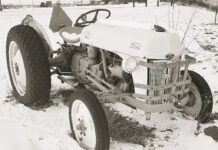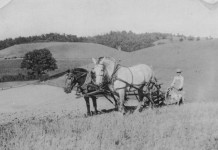Internal parasites fight a continuous battle with grazing animals. Much attention is directed to issues with small ruminants, however, all types of livestock on pasture are subjected to a variety of internal parasites.
At times, the effects of internal parasites can easily be observed with clinical signs. These can range from poor hair coat and weight loss to death. On the other hand, subclinical effects can go unnoticed. Reduced milk production, reduced rates of gain and decreased conception rates are examples. While often unnoticed, these result in significant economic losses.
Parasites
There are several different internal parasites that can cause problems, but stomach worms are the ones that are most often associated with grazing problems in ruminants in our Midwestern climate.
When infected with these parasites, animals will shed worm eggs in their feces. This initiates the next generation of stomach worms as the eggs hatch and develop into larvae in manure. The larvae can make their way up forage leaves in droplets of water. The larvae are eaten and develop to the point where they are capable of laying eggs and creating the next generation.
Under ideal conditions, eggs can develop to the re-infesting larva in three to four days. In hot dry conditions, like last summer, the larvae may only survive two to four weeks. In moist conditions, this life may stretch to two to three months. The big problem is some larvae may survive up to six months under ideal conditions.
Pasture management
There are some ways to manage pasture to reduce parasite issues. One practice is the use of rotational grazing.
Increasing the length of time before animals are re-introduced to a pasture can allow time for some of the larvae to die. Rest periods of 30 to 45 days are common, but if that can be increased to 60 to 90 days in areas that may be heavily infested, larvae numbers can be reduced significantly.
Keep in mind that high stocking density in rotational grazing systems could increase the parasite load in a given area which could then partially offset the reduction of larvae with increased rest time.
Avoiding overgrazing is not only good for the forage but can also reduce intake of parasite larvae.
Larvae tend to be in the highest concentration on the lower portions of plants. Only grazing plants down to 3 to 4 inches can reduce the intake of parasite larvae. This is another benefit observed with rotational grazing.
Multi-species grazing
Multi-species rotational grazing can be a valuable tool in parasite control. The parasites that affect small ruminants typically do not cause a problem with cattle and vice versa. Rotation of alternating species can provide a couple benefits.
With rotational grazing, pastures may be ready to re-graze before the end of the 60-to-90-day waiting period that would allow natural death of a good portion of parasite larvae. Grazing by a different species during this waiting period can utilize the forage growth while cleaning out parasite larvae that are not harmful to this alternate species.
This can lengthen the reintroduction period of the susceptible species, allowing more larvae to die naturally.
Parasite management is most effective when it is a combination of pasture management and judicious use of dewormers. Some populations of parasites have shown resistance to current deworming products. Use of dewormers is beyond the scope of this article but Ohio State Extension does offer hands-on clinics for fecal egg counting and FAMACHA scoring where use of dewormers is covered in detail.
Learn more
There is an upcoming class scheduled for May 30 from 9 a.m. to 3 p.m. at the Statford Ecological Center, 3083 Liberty Road in Delaware, Ohio. The course is $35 and is limited to 20 participants.
Topics to be covered include internal parasite concerns, pasture and animal management, fecal egg count demonstration, blood draw demonstration and FAMACHA certifcation training. Registration is required by May 15. To register, go to https://osu.az1.qualtrics.com/jfe/form/SV_eCMjTuJ8CdWcFnw.
For more information, email JacciSmith.11005@osu.edu.













